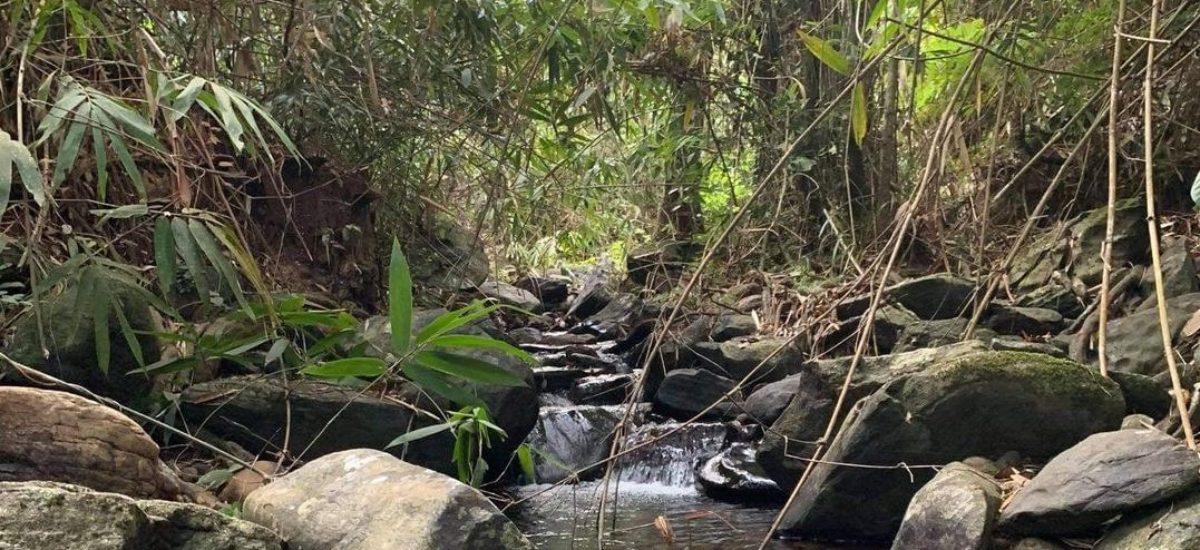Photo courtesy of Rainforest Protectors Trust
Environmentalists are up in arms once again as the government withdrew two circulars that protected 700,000 hectares of forests, which are now in danger of being destroyed so that the land could be used for agriculture or development purposes. These forests make up five percent of the remaining 16.5 percent of forest cover in Sri Lanka.
The Ministry of Wildlife Resources and Forest Conservation issued a press release saying that both circular 5/2001 and circular 2/2006 have been cancelled. This means that what is called Other State Forests (OSFs) will be removed from the direct control of the Department of Forest Conversation and handed back to the District Secretariats and Divisional Secretariats.
This reverses a decision taken 19 years ago to protect OSFs, which was strengthened in 2009 through an update to the Forest Conservation Ordinance. Now these forests can be used for any purpose, regardless of the impact on the environment, with the issuance of permits by the District and Divisional Secretariats in consultation with the Department of Forest Conservation.
“These forests harbour much biological diversity and many fragile ecosystems. Their destruction will lead to climate problems and many other serious issues,” said environmental lawyer Jagath Gunawardena, charging that there would be a large scale land grab in the coming months if the decision was not reversed.
The forests are used by animals, especially elephants, as migratory corridors. Unable to do this, they will venture onto agricultural lands, aggravating the already grave elephant-human conflict, for which President Gotabaya Rajapaksa directed officials to devise a sustainable solution within two years.
“Under the cover of the pandemic, the government has bulldozed this decision through although there is no justification for it,” Mr. Gunawardena said, pointing out that the government referred to these forest as “residual” forests when there was no such term because they were proper forests.
Writing on Groundviews when the proposal to withdraw the circulars was first put forward to Cabinet in July, environmental activist Sunela Jayewardene referred to the British colonisers who had destroyed vast tracts of forests for agriculture. “Those were foreign colonists who grabbed our land and devastated our forests, with little care for the impact on Sri Lankans. Then, in addition to the vast unknown numbers of wildlife species and medicinal plants that were lost, streams died and our land began to dry, as root supply to ancient reservoir systems disappeared. Now, if our own elected leaders destroy forests for short term economic gain, justified as “residual” according to some muddled administrative pattern, how is it different? In reality, it will be worse in this era of global climate change.”
At the UN summit on bio-diversity in September, President Rajapaksa declared that Sri Lanka was deeply committed to upholdingthe spirit of the Convention on Biodiversity. “Sri Lanka firmly stands committed to protect and sustainably manage this natural asset that contributes to our unique and rich biodiversity,” he said, referring to the country’s two UNESCO Natural Heritage Sites – the Central Highlands and the Sinharaja Rain Forest Reserve – as well as the six sites recognised under the Ramsar Convention on Wetlands.
Vistas of Prosperity and Splendour, which sets out President Rajapaksa’s vision for Sri Lanka, called for an increase of forest cover to 30 percent. “The sustainability of land and water resource management will be ensured while taking proactive measures to increase national forest cover by 30%. Appropriate and definitive measures will be taken to identify areas for reforestation purposes,” it said.
The forest cover of Sri Lanka in 2019 was 16.5 percent. Between 1990 and 2000, the country lost an average of 26,800 hectares of forest per year, which amounted to an average annual deforestation rate of 1.14 percent. In total, between 1990 and 2005 alone, 17.7 percent of forest cover was destroyed. Over 137 years, 65.5 percent of the forests have been cut down.
Dr Ravindra Kariyawasam from the Centre of Environment and Nature Studies said that this was due to the rise in population, development, construction of major dams and highways and urbanisation. In 2010, the World Food and Health Organization ranked Sri Lanka as the fourth country with the highest rate of deforestation, a position that it still hold today, he pointed out.
Many environmental defenders and organisations took to social media to express their dismay at the cancellation of the circulars.
“We are absolutely gutted at the news…” wrote the Forest Healing Foundation on its Facebook page. While recognising the need to use land for economic purposes, the Foundation pointed out that the destruction of such large areas of forests would lead to water scarcity and increased human-wildlife conflict in the long term.
One of the main reasons for removing the circulars was the bureaucratic restrictions that deterred chena farmers from cultivating the land with their slash and burn method. However, the Foundation pointed out that only 36 percent of the country’s existing agricultural land was used productively, so farmers could use the land that had already been cleared instead of destroying more forests.
“Decisions like this can set a worrying precedent for future threats to our forests and nature,” The Foundation pointed out.

